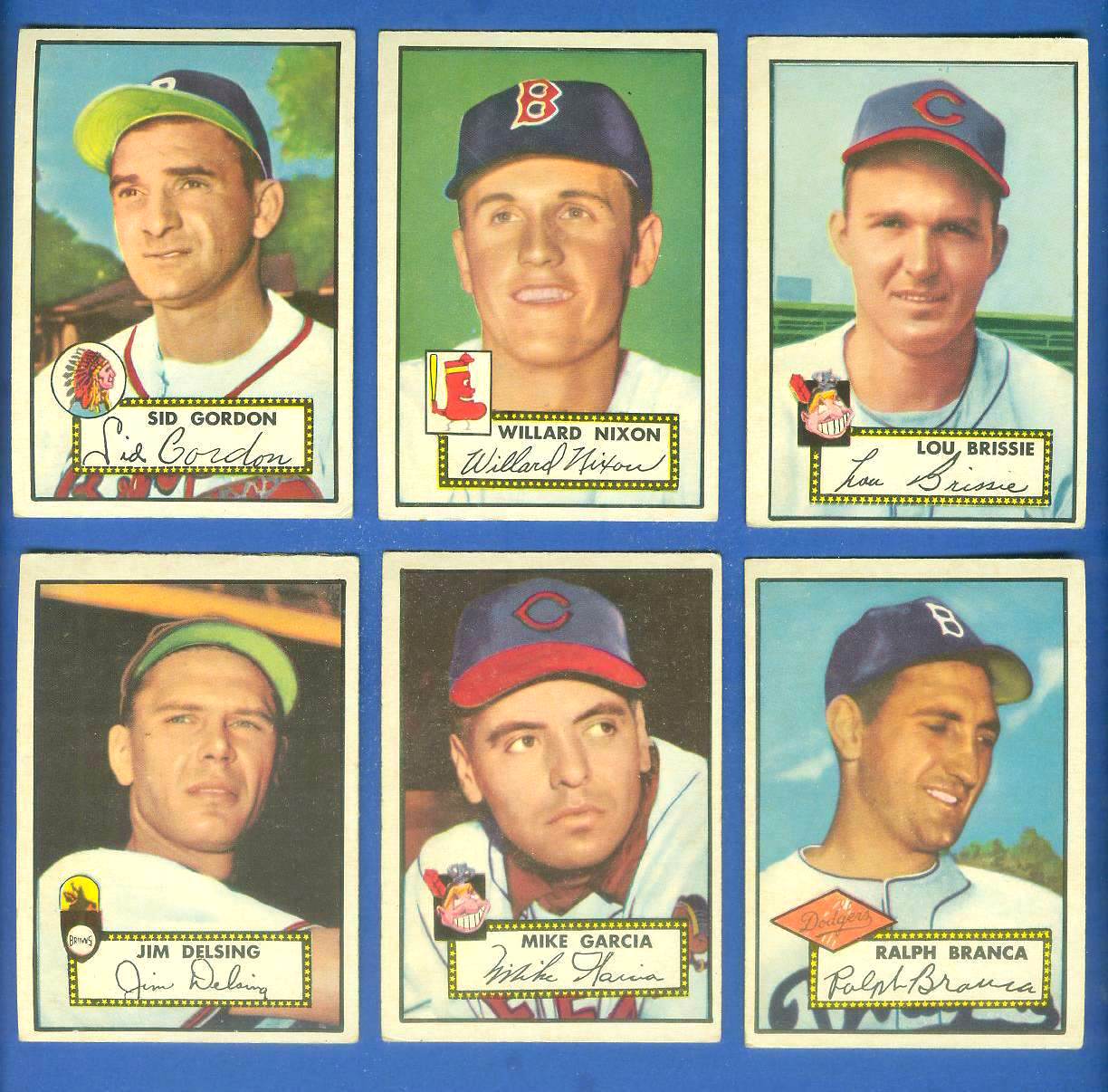1952 Topps #270 Lou Brissie (Indians)
'217' is written in small print on the back in ink. It does not interfere with any of the printing. SHARP CARD !

Please wander around the website for more info, prices, values & images
on vintage baseball, football, basketball, hockey, sport and non-sports cards.
1955 Topps All-American Football |

Vintage Baseball Card Auction terminology
Register:With name, address & email so we can
contact you after auctions with your winning bids.
Click for more info on my Weekly Vintage BASEBALL CARD AUCTIONS
2 Types of Bidding: [YES] / [NO] auction bids - Click on YES button to make only the next bid. [MAXBID] auction bids - Enter MAXIMUM you would bid on this item. If outbid, auction software makes the next bid if is not more than your auction [MAXBID]. Minimum or Start Bid: More expensive auction items may have minimum or starting bids. Saves time rather than auction bids going up .25 at a time, taking many dozens of bids to reach even fractions of value. Reserve Bid: "Reserve" auction bids come into play after an auction ends. If "Hammer" price is less than "Reserve" bid no sale. Not very auction bidder friendly.
|

1948-1949 Leaf Baseball Cards |

The first baseball trading cards date back to 1869. For many years, baseball cards were packaged in packs of tobacco as a way to increase sales the same way that today prizes are packaged in boxes of cereal. In the 1920's and 1930's, candy and gum companies started packaging baseball cards in their products as well.
Baseball card production was virtually halted in the early 1940's due to paper shortages created by World War II. The "Modern Era" of baseball cards began in 1948 when Bowman Gum Inc. offered one card and one piece of gum in a pack for a penny.
The first important football set was the Mayo set featuring college players in 1984. Other than the 1935 National Chicle set no other key football set was issued until 1948 when noth Bowman and Leaf produced sets.



